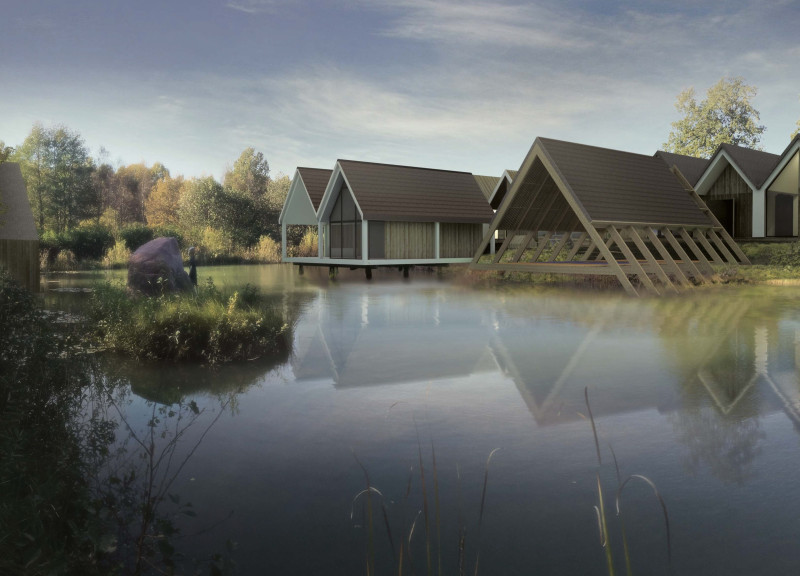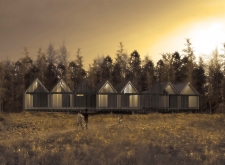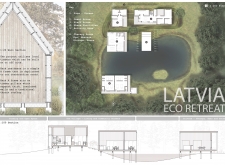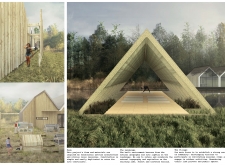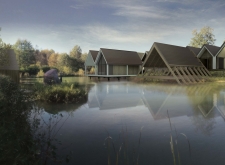5 key facts about this project
Functionally, the retreat serves as a wellness hub that provides visitors with an opportunity to disconnect from daily life and reconnect with themselves and their surroundings. The architectural layout highlights a modular approach, with a series of A-frame structures reminiscent of traditional Latvian homes. These structures are designed not only for individual accommodation but also to facilitate social interaction, featuring shared spaces such as community gardens and activity areas that promote involvement in group activities.
Key elements of the project include the use of sustainable materials that echo the ecological ethos driving the design. Local timber forms the primary structural component, chosen for its thermal insulation properties and its ecological footprint. This choice not only supports the local economy but also minimizes transportation emissions, making a significant statement about responsible material sourcing. The roofing employs traditional thatch alongside modern materials, blending rural charm with contemporary requirements for durability and maintenance. Large glass windows provide an unobstructed view of the surrounding landscape while maximizing natural light within the interiors, thereby enhancing the connection between the indoor and outdoor environments.
The intricate spatial organization of the retreat allows for distinctly separated zones that cater to various activities moving seamlessly from private retreats to communal spaces. The arrangement of the cabins around central shared areas encourages interactions among guests, fostering a sense of community that is often lost in more conventional lodging. Beautifully landscaped pathways guide visitors through therapeutic gardens and differing activity zones, establishing a natural flow throughout the site. This thoughtful organization not only aids navigation but also supports an immersive experience in nature that promotes physical health and mental well-being.
A distinctive aspect of the design is its focus on integrating the built environment with existing natural features. By elevating structures on timber pillars, the retreat effectively minimizes environmental impact while addressing potential flooding and moisture-related challenges. The incorporation of a central pond not only serves aesthetic purposes but also enriches the local ecosystem, creating habitats for various species and enhancing the overall biophilic quality of the site.
The architectural design of the Latvia Eco Retreat serves as a poignant reflection of local culture while promoting sustainable practices through its careful selection of materials and construction techniques. This project stands as a viable example of how architecture can respond sensitively to its context while encouraging community interaction and environmental stewardship. The emphasis on wellness, sustainability, and community creates a framework that invites a deepened connection between individuals and their surroundings.
For those interested in delving deeper into the project, exploring architectural plans, architectural sections, architectural designs, and architectural ideas related to the Latvia Eco Retreat will provide further insights into how this carefully crafted space has been conceptualized and brought to life.


